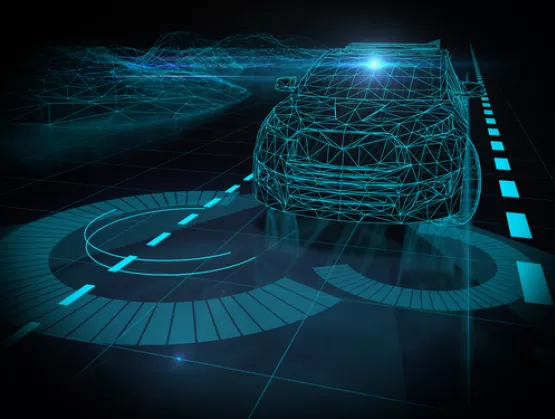
If the Model C electric vehicle unveiled by Hon Hai in 2021 is a bellwether for the Taiwan semiconductor industry, the New Taipei City-based electronics contract manufacturer may be onto sometime big. The production version of the EV is set to hit the roads in Taiwan in the second half of this year. But consumers are already raring to go as the company fielded more than 15,000 pre-sales orders in just two days.
The automotive industry, a key force behind the C.A.S.E (connectivity, autonomous, sharing/subscription, electrification) mega-trend, is poised to drive huge growth momentum for the entire semiconductor industry. Bob Chen, General Manager of the S Business Group at Hon Hai Technology Group, sees boom times ahead for the island’s semiconductor industry as it brings its information and communications technology and chipmaking prowess to bear on the exploding market for electric vehicles.
Taiwan, long a global semiconductor power, won’t be able to rest on its laurels as the electrification of automotive engines continues to go mainstream, teeming with semiconductors and featuring more software and motor control, Chen said, speaking at the Global Auto Chips Executive Summit at SEMICON Taiwan last fall.
Still, Chen said the time is ripe for Taiwan’s semiconductor industry to become a key provider of automotive semiconductors, just as it firmly established itself as a central supply chain player in providing chips for other electronics. The paradigm shift EVs have spurred in automotive innovation will be sure to accelerate future semiconductor advances, and the leaders will be those chipmakers that remain ahead of the innovation curve to deliver the most advanced products, many of which will find applications in other industries.
![]() For example, the Mobility in Harmony (MIH) open EV platform developed by Hon Hai offers reference designs and standards that can help reduce chip development cycle time and cost. Ultimately, the platform makes possible a shorter yet more comprehensive supply chain, leading to another potential advantage – preventing future chip shortages.
For example, the Mobility in Harmony (MIH) open EV platform developed by Hon Hai offers reference designs and standards that can help reduce chip development cycle time and cost. Ultimately, the platform makes possible a shorter yet more comprehensive supply chain, leading to another potential advantage – preventing future chip shortages.
Adapting to Chip Shortages, Volkswagen Improves Supply Chain Resilience
To navigate, and help re-define, the new world of car-making, Volkswagen has rolled out its New Auto strategy to recast what automobiles mean.
“We’re working to connect individual elements of our automobile manufacturing system including electronic control units (ECUs), software. batteries and battery cores through a semiconductor-enabled technology platform to manage data and maintain stability of the automobile manufacturing process,” said Berthold Hellenthal, Strategic Semiconductors Management at Volkswagen, speaking at the Executive Summit. “The platform runs through a smart power system that will not function without compatible electronic components. Battery control, charging, communication, and self-driving are all powered by semiconductors. That is why all the auto brands under Volkswagen are adopting the same integrated platform.”
After the 2019 global auto chip shortage upended the automotive supply chain, carmakers found themselves lacking ECUs and other key components, a predicament that forced them to encourage their Tier 1 suppliers to pressure downstream suppliers to provide materials they needed. To its advantage, Volkswagen’s automotive development spanned the entire supply chain operation, giving it visibility into the status of supplies throughout the ecosystem. Today, the carmaker has short, medium, and long-term plans in place to integrate with the chip supply chain more effectively by working more closely with chipmakers while staying in touch with material suppliers to ensure the uninterrupted supply of semiconductors.
Automakers Should Focus More on Future Applications
During chip industry downturns such as the current softening, Gaurav Gupta, Vice President of Research and Advisory at Gartner, encourages auto companies to position themselves for long-term product development and growth.
 “For example, a carmaker should be paying more attention to applications that have growth potential in the future, such as different levels of self-driving functions,” Gupta said. “The auto industry should also learn from the recent auto chip crisis and try to incorporate chips with more advanced manufacturing processes since semiconductors manufactured at mature nodes are typically the first to fall short in supply.”
“For example, a carmaker should be paying more attention to applications that have growth potential in the future, such as different levels of self-driving functions,” Gupta said. “The auto industry should also learn from the recent auto chip crisis and try to incorporate chips with more advanced manufacturing processes since semiconductors manufactured at mature nodes are typically the first to fall short in supply.”
“Automakers should also work to increase their visibility into the supply chain, proactively communicating and cooperating with chipmakers to ensure smooth interaction going on in the ecosystem,” he noted. “Only by doing so can they remain current on the status of chip development and manufacturing.”
Auto Industry Transforms as Electrification Drives Demand for Semiconductors
With electrification and digitalization two major trends rippling across the automotive industry in recent years, Yoshifumi Kato, CTO of the Advanced Devices Business Group at DENSO Corporation, believes that the automotive industry will usher in a C.A.S.E. future – all cars will one day be self-driving. To enable this historic transition in transportation, silicon-based devices will soon be replaced by silicon carbide (SiC). What’s more, the sensitivity of sensors used for self-driving and ADAS will improve, and LiDAR will be deployed to enhance the system's perception of the surrounding environment.
Kato said data collected by the sensors will be processed in a centralized ECU or a high-performance computing (HPC) center. Both require high-end SoCs with powerful computing capabilities, as does artificial intelligence (AI).
Takeshi Kataoka, Senior Vice President of Renesas Electronics Corporation, echoed Kato’s view of automobiles as electrification and digitalization reshape the industry. Sheer machinery and mechanics won’t define a car’s capabilities and its value to consumers, he said. Instead, the essence of automobiles will boil down to electronics and software. And as vehicles add even more sensors, making the entire system more complex, the volume of data generated by and transmitted within the car will only grow, compelling carmakers to create designs that steer clear of conflicts and anomalies in data flows to ensure smooth and safe operation, Kataoka said.

Hans Adlkofer, Senior Vice President of Infineon Technologies, pointed out that self-driving cars will transform the automotive industry, with new functions and capabilities powered by semiconductors for sensing, computing, and communication, while dramatically increasing chip demand.
Future cars can also be viewed as an oversize Internet of Things (IoT) device whose sensing system, computing system and server are operated through software and connected-car functions, Adlkofer said. A robust in-vehicle connectivity system will be vital for the car to access data and function in a safe way.
The current automotive market is still dominated by combustion-engine cars, which use radar and image sensors, and many vehicles are now equipped with Level 1 and Level 2 driver assistance systems.
As adoption of hybrid and pure electric automobiles continues to increase, so will their capabilities, said C.P. Hung, Vice President of ASE Group. “All functions will be driven by software modeled after data centers in their sophistication,” he said. “Tesla’s smart software and connectivity will become standard for EVs to enable inter-vehicles communications as the backbone of data networks in future smart cities.”
SEMI Auto IC Master to Help Spur Automotive Innovation
The SEMI Auto IC Master, a comprehensive guide to automotive semiconductor and component providers in Taiwan, is designed to enable closer collaboration among carmakers, automobile Tier 1 suppliers and Taiwan’s semiconductor IDM and fabless companies. The guide promises to help automakers better adapt production capacity to semiconductor supply chain disruptions and drive innovation. It is available through an online account or in hard copy and can be purchased by contacting the SEMI Taiwan representatives listed on the SEMI Auto IC Master webpage.
Ashley Huang is a senior marketing specialist at SEMI Taiwan.